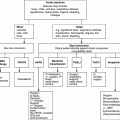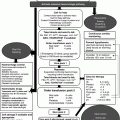Chapter 24 Charlotte Kallmeyer Department of Haematology, St James’s University Hospital, Leeds Teaching Hospitals NHS Trust, Leeds,UK Significant progress has been made over the last two decades in the treatment and prognosis of most haematological malignancies. The improvements in outlook have resulted in part from intensification in treatment, e.g. increased use of allogeneic stem cell transplant due to the introduction of reduced intensity regimens. However, most of the progress has been due to the introduction of novel agents with more targeted mechanisms of action than traditional DNA-damaging chemotherapy. In parallel, there have been improvements in supportive care, particularly regarding prophylaxis and treatment of infectious complications. Despite the overall increase in survival for patients with haematological cancers, some patient groups have benefitted relatively little. These include in particular patients older than 65 years, whose outlook remains very poor for some diseases and generally inferior to younger patients. It is also worth noting that outcomes reported in trials tend to be better than in population-based analysis. This is due to the frequent exclusion of patients with poor performance status or short survival time from interventional trials. For a population-based summary of epidemiology and relative overall survival (OS) for different haematological malignancies, see Table 24.1. Table 24.1 Epidemiology of different haematological malignancies according to the National Cancer Institute based on the US population data 2005–2009. Source: National Cancer Institute [1]. UK survival rates are on average 2–3% lower. Relative overall survival (OS relative to an age- and sex-matched normal population). This is the most common acute leukaemia in adults and represents a heterogeneous disease with the outcome heavily influenced by acquired genomic abnormalities. Median age at diagnosis is 66 years. In younger patients (<60 years) and selected older patients without adverse disease features or significant co-morbidities, intensive therapy is given with curative intent. Therapy is generally divided into a remission induction and a consolidation phase. The mainstay of induction therapy for the last 40 years has been intravenous chemotherapy with cytosine arabinoside (Ara-C) in combination with an anthracycline, usually given for two cycles. The consolidation phase generally consists of regimens containing high-dose Ara-C for one to three cycles and/or, in patients with adverse disease factors, allogeneic stem cell transplantation. With current treatments, remission induction is successful in greater than 80% of patients [2]. A 5-year OS is 42% but varies considerably by disease risk status. For example, acute myeloid leukaemia (AML) with core binding factor translocations or isolated nucleophosmin-1 (NPM1) mutations has a 5-year survival greater than 60%, whereas corresponding survival for patients with adverse chromosome abnormalities is less than 20%. The main complications of treatment are infections due to the prolonged period of severe neutropenia. Infections are usually bacterial and less commonly fungal in origin. In older patients (>60 years), survival remains less satisfactory with cure rates of less than 10% and a disappointing median survival of less than 1 year overall. Swedish registry data indicate that for most patients up to 79 years of age, intensive therapy produces a better outcome with remission rates around 50% and a 2-year survival of 20% [3]. The relatively poorer outcome in older patients is not strongly influenced by age per se [4] but is due both to patient-related factors, i.e. co-morbidities, and disease-related factors, i.e. higher rate of adverse cytogenetic abnormalities. For frailer patients, low-intensity treatment, for example, with subcutaneous Ara-C or oral hydroxycarbamide, can achieve disease control for a period of weeks or months. An important subtype of AML (10%) is acute promyelocytic leukaemia (APL), which enjoys a markedly superior long-term OS of greater than 80%. Treatment is based on chemotherapy with an anthracycline in combination with all-trans-retinoic acid (ATRA), which induces terminal differentiation of the abnormal promyelocytes. Recent data suggests that combination treatment of ATRA with arsenic trioxide can achieve similar outcomes and may allow cure without cytotoxic chemotherapy. Early death rate is still greater than 10%, mainly due to coagulopathy (fibrinolysis) and thrombocytopenia leading to haemorrhage. Aggressive management of such early complications is essential as patients surviving these will have an excellent long-term prognosis (see Chapter 4 for acute management of suspected APL). In contrast to children and adolescents, acute lymphoblastic leukaemia (ALL) is uncommon in adults. Similar to AML, the outcome for ALL patients differs significantly between patients less than 60 years and older patients. Treatment with curative intent consists of an induction phase usually containing dexamethasone, vincristine, asparaginase and daunorubicin, followed by exposure to cyclophosphamide and Ara-C. The consolidation phase generally contains agents to prevent central nervous system (CNS) relapse, e.g. intravenous methotrexate, and may include periods of intensification using similar agents as during induction phase. Treatment is completed by a long maintenance phase of oral mercaptopurine and methotrexate in addition to intermittent intravenous vincristine and intrathecal chemotherapy. Overall, in patients not undergoing allogeneic stem cell transplant, total treatment duration is around 24–30 months. Remission can be achieved in 80–95% of patients. However, the majority will relapse. Despite recent improvements, outcome in adults remains strikingly inferior to paediatric results, and long-term survival, even with intensive treatment, can only be achieved in around 30–40% of patients. Allogeneic stem cell transplantation instead of maintenance is considered for eligible patients with high-risk and standard-risk disease and results in long-term survival of around 50%.
Haematological Malignancy Outside Intensive Care: Current Practice and Outcomes
Median age at diagnosis (years)
Annual incidence (per 100,000)
5-year relative OS (%)
Acute lymphoblastic leukaemia (ALL)
14
1.6
65.2
Acute myeloid leukaemia (AML)
66
3.6
23.4
Chronic lymphocytic leukaemia (CLL)
72
4.2
78.8
Chronic myeloid leukaemia (CML)
64
1.6
59.1
B-cell non-Hodgkin’s lymphoma (NHL)
66
19.6
68.2
Hodgkin’s lymphoma (HL)
38
2.8
84.7
Multiple myeloma
69
5.8
41.1
Acute leukaemia
Acute myeloid leukaemia (AML)
Acute lymphoblastic leukaemia (ALL)
Stay updated, free articles. Join our Telegram channel

Full access? Get Clinical Tree






